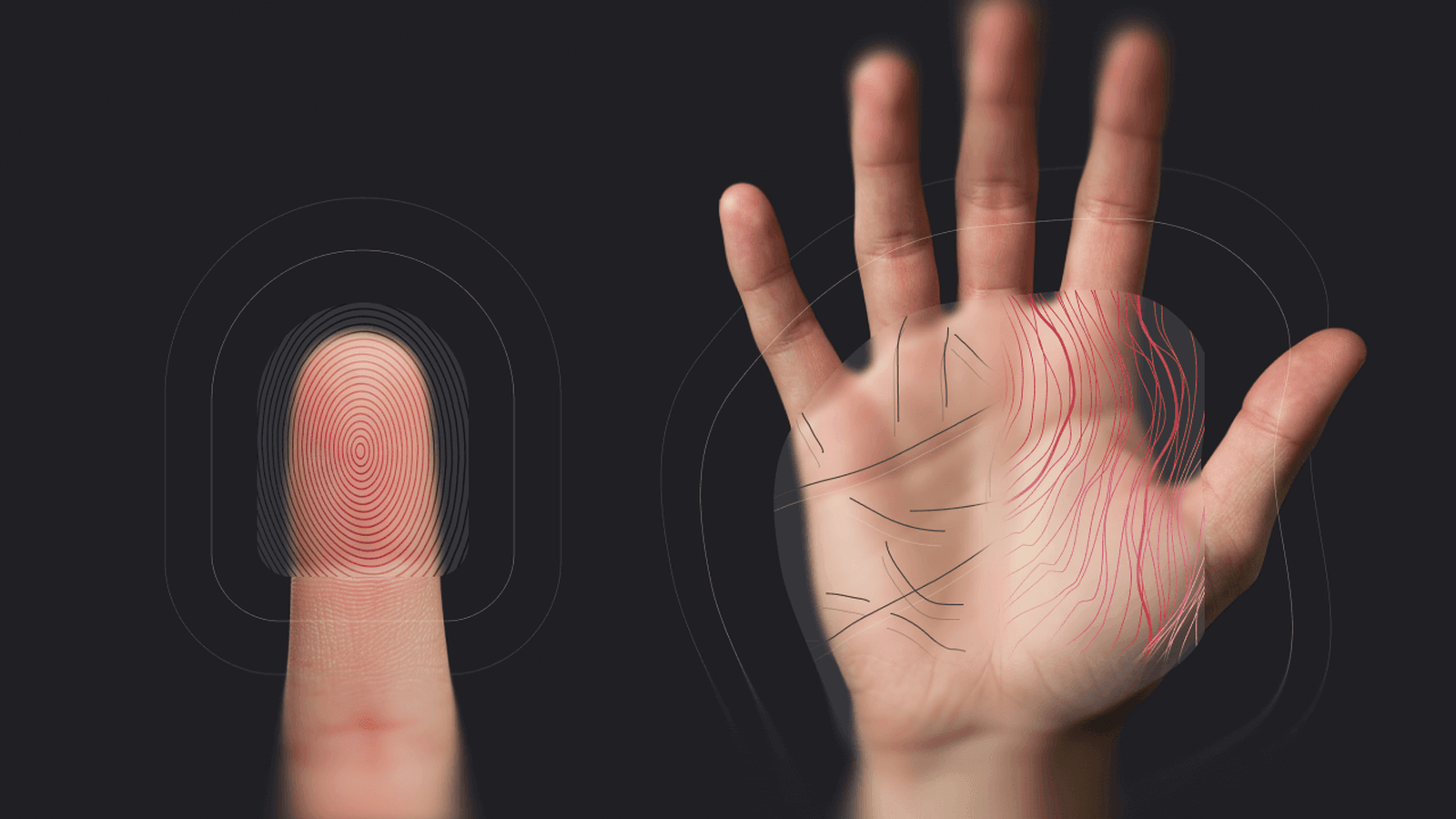Beyond the surface: A deep dive into fingerprint and palm scanning
Recently, biometric identification methods like fingerprint and palm scanning have become increasingly common. While they may seem like futuristic conveniences, their purpose goes far beyond mere luxury. These technologies are experiencing rapid growth, driven by rising security concerns, technological advancements, and a growing demand for contactless authentication across industries such as banking, access control, and mobile payments. This upward trend is expected to continue, with the market projected to expand significantly in the coming years.
As the technology continues to evolve, let's explore two widely used methods—fingerprint and palm recognition—and examine their key differences.

What is fingerprint technology?
Fingerprint technology authenticates an individual's identity using the unique ridges and patterns of their fingerprint. It’s one of the most widely used biometric methods, commonly found in smartphones, access control systems, and other everyday applications. Fingerprint scanners analyze the intricate patterns of arches, loops, and whorls on a person's fingertip, cross-referencing the data against a stored template for verification.
Though effective and widely deployed, fingerprint scanning does present some limitations. Dirt, moisture, or surface wear can affect performance and accuracy.
What is palm scanning?
Palm scanning leverages the unique features of the palm for identification and authentication purposes. This method often combines palm prints (the visible surface patterns) with palm vein recognition, which analyzes the unique vein patterns beneath the skin using advanced infrared scanning technology.
This approach delivers unmatched accuracy, providing a reliable biometric solution for various scenarios, such as payments, ticketing, and access control. With contactless use and tamper resistance, palm scanning is widely seen as one of the most secure and scalable biometric options.
Fingerprint Scanning vs Palm Scanning
While fingerprinting is familiar and extensively used, palm scanning offers a few unique benefits. Let's explore how these two technologies stack up against each other.

1. Accuracy
When it comes to accuracy, palm scanning stands out. A palm print contains approximately ten times more unique features than a fingerprint on the same hand. This means there’s exponentially more data to distinguish one person from another, making palm recognition inherently more reliable.
But that's not all—modern advancements in palm scanning, like Keyo's palm scanning technology, utilize a combination of palm prints and palm veins. This layered approach significantly enhances accuracy by reducing false acceptance rates (FAR) and false rejection rates (FRR). Palm vein biometrics is now considered one of the most precise biometric modalities in existence.
While fingerprint scanning has proven effective, it is limited by the finger's smaller surface area and fewer unique identifying features, which can occasionally lead to identification errors.
2. Security
Biometric security isn't just about precision; it's also about withstanding attempts to breach it. Unfortunately, fingerprints can be easily lifted from hard surfaces, allowing for potential misuse or replication of an individual’s biometric data.
Palm scanning, particularly palm vein recognition, is much more difficult to replicate. The unique pattern of veins in an individual’s hand lies beneath the skin, and it can only be detected using specialized infrared scanners. This adds an extra layer of security, making palm vein biometrics virtually tamper-proof.
3. Scalability
Fingerprint scanners are commonly used for specific, isolated applications, such as unlocking personal devices or securing certain workspaces. While effective for these individual use cases, they are limited in their utility for larger-scale identity solutions across industries.
Palm scanning, however, is highly scalable and versatile. It has the potential to be implemented across a wide range of industries and environments—from healthcare and financial institutions to transportation hubs and public events. Its ability to work without physical contact also enhances hygiene and user comfort, which is a major advantage for high-traffic or shared environments.
When to use fingerprint scanning
Fingerprint scanning remains a great biometric solution for applications requiring quick and personal access. Examples include unlocking smartphones, controlling access to small office spaces, or securing personal devices. Its widespread availability and affordability make it an accessible option for many users.
When to consider palm scanning
Palm scanning is an optimal choice for businesses and organizations seeking a reliable, scalable, and highly secure identity verification solution. Its enhanced accuracy and security make it well-suited for applications where sensitive data is at stake, such as secure banking, large-scale customer onboarding, or medical record access.

Keyo's palm scanning solution for identification, payments, ticketing, and more.
Keyo’s customizable and privacy-compliant biometric platform helps enable fast, easy, and exciting customer experiences. With Keyo's advanced palm scanners and a fully integrated suite of tools, we make it easy to use biometric technology and bring your vision to life. Partners worldwide rely on our secure identity solution for seamless payments, identification, check-ins, and more. Contact us to learn more.
